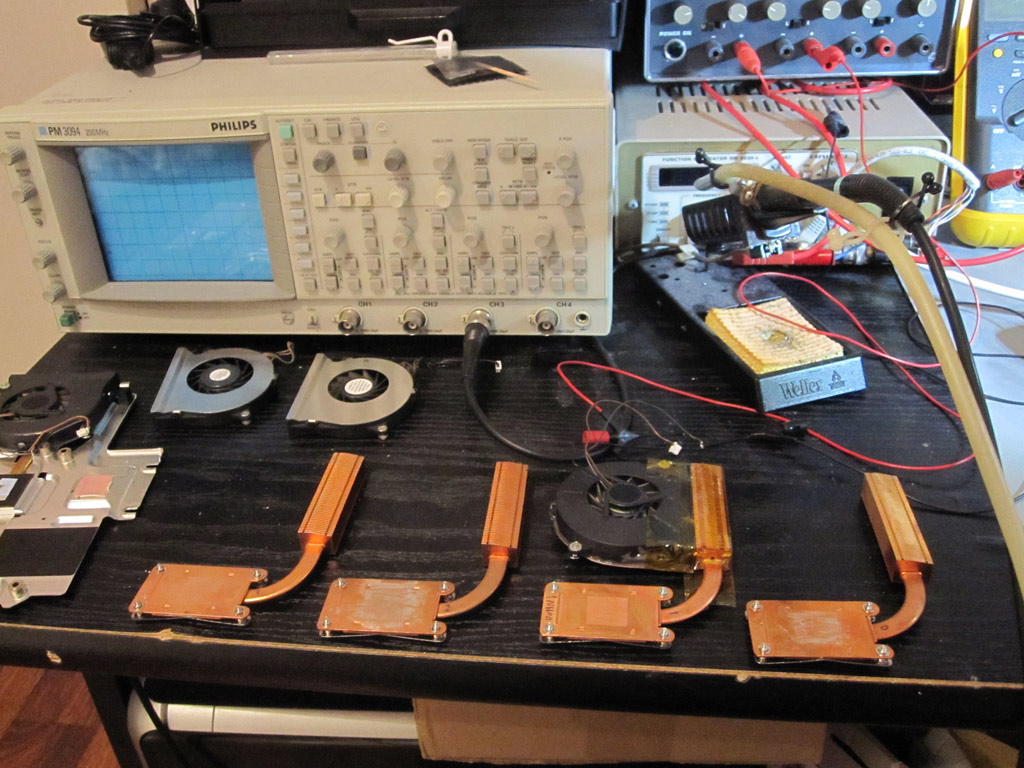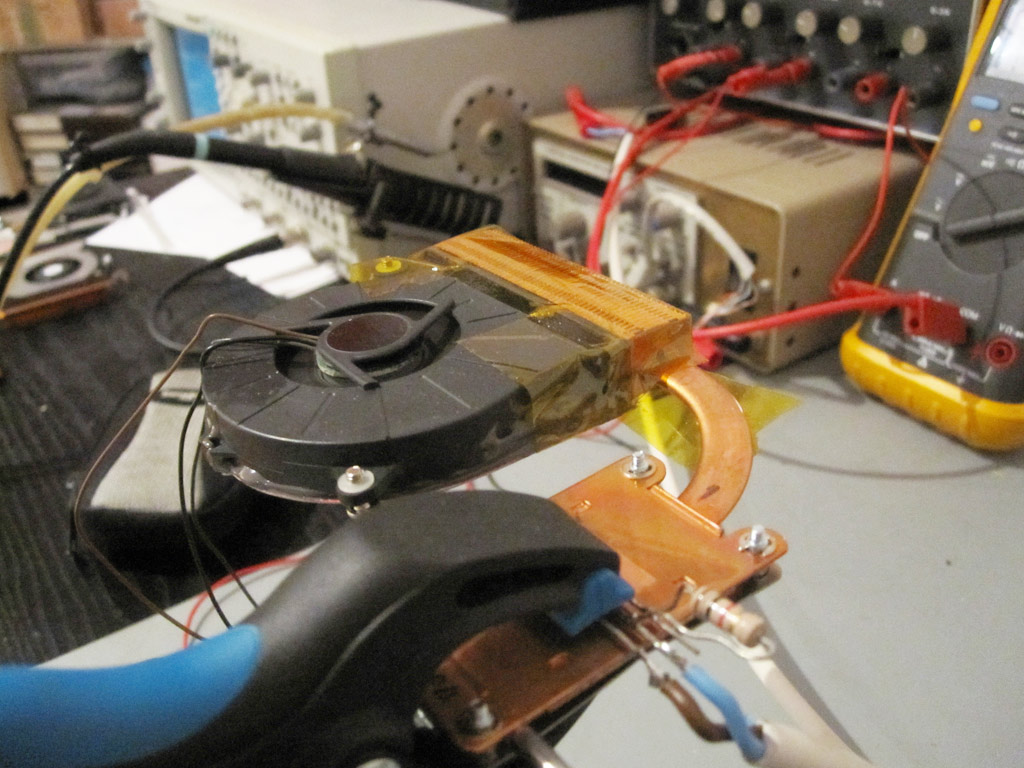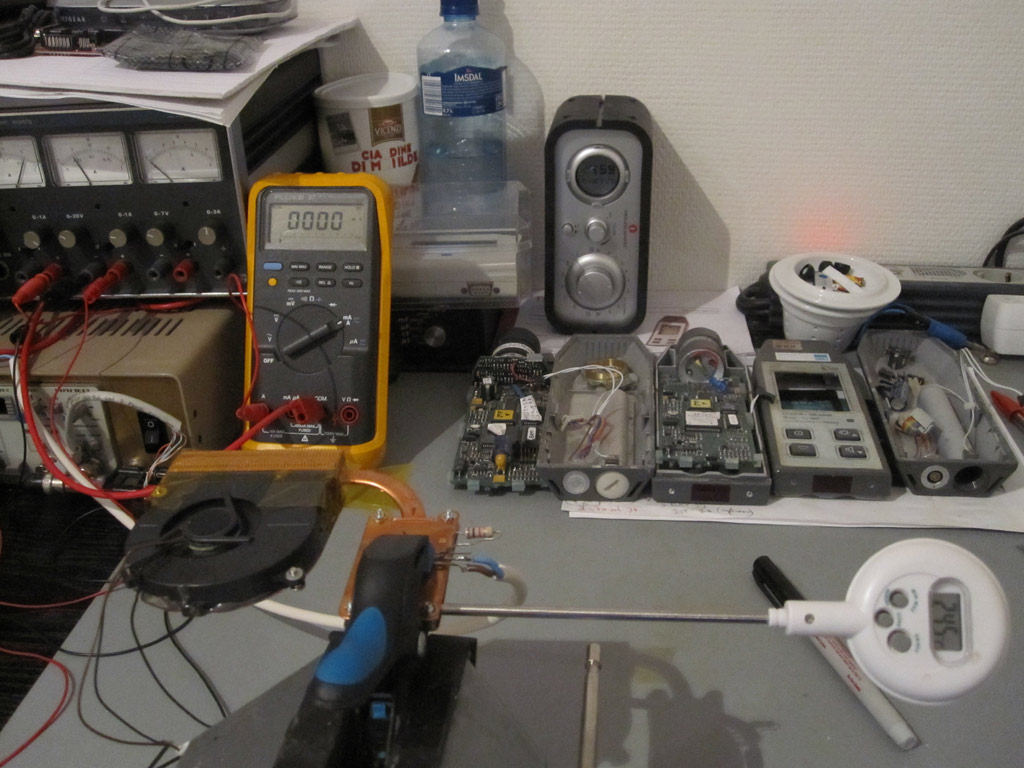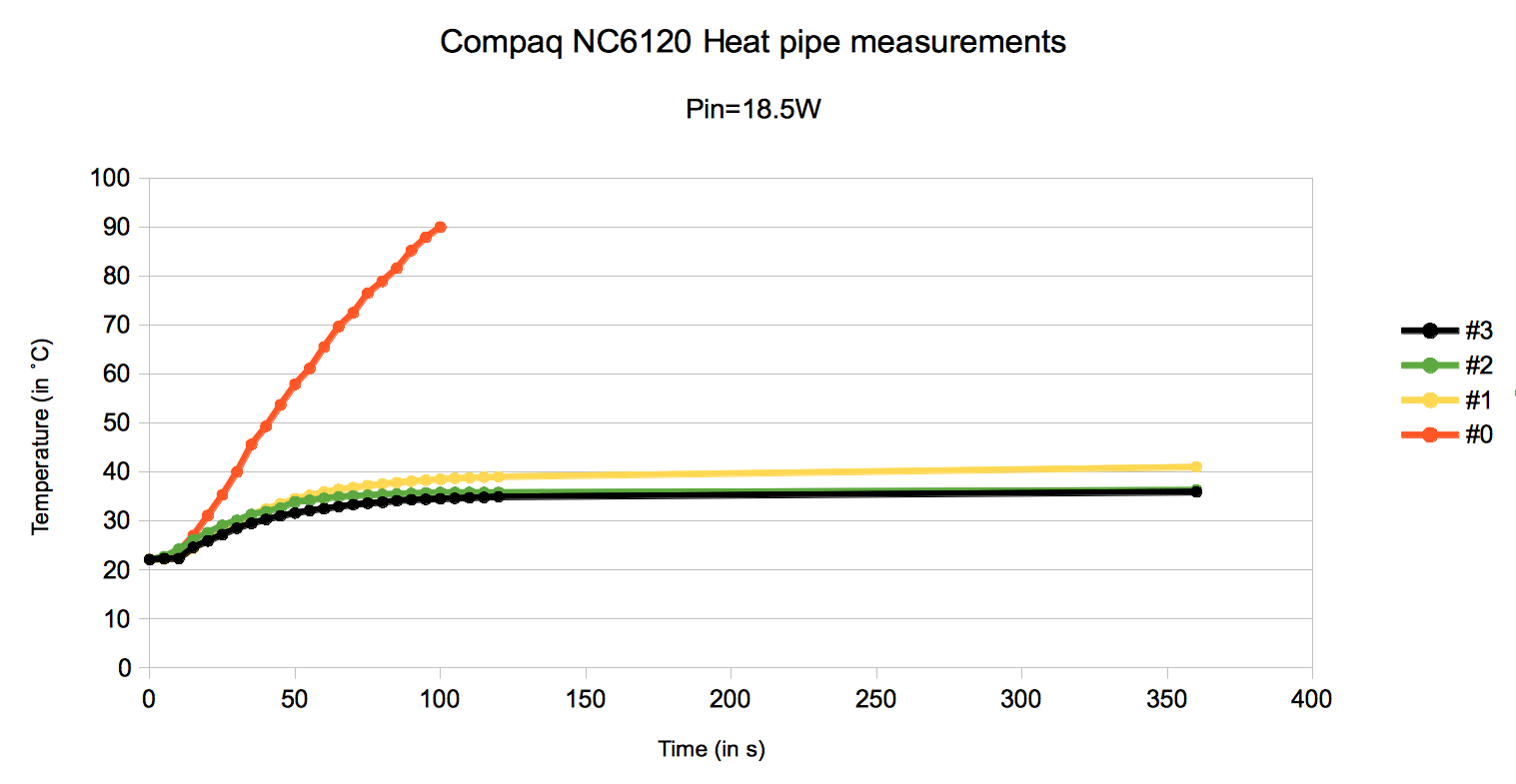projects:mechanical:tests:heatpipes
This is an old revision of the document!
Table of Contents
Measuring heat-pipe quality
This page describes test procedures, measurements and results from comparing heat transfer capabilities between a certain type of heat-pipes.
Test method
- As heat source I used a TIP42C PNP-transistor with a 56Ω resistor between the basis and the collector. During testing it is good to think about the maximum emitter-base voltage, which should not exceed 5v. During heat dissipation, the supplied voltage between the emitter and collector was 6v, while the current was about 3A. Due to the temperature differences, the current would vary accordingly. Therefore the power consumption is according to observations about 18.5w ± 0.5w.
- The fan which belongs to the computer is used and runs at maximum speed, at 5v. With sticky tape all air is guaranteed to flow through the narrow radiator channel.
- The ambient temperature was 22.1°C.
- After powering up the fan and transistor, every 5 seconds a sample was read from the temperature sensor. After 120 seconds, another 5 minutes had been waited and the final temperature had been read. At this moment all of the heat-pipes (Except #0) were in their thermal equilibrium.
| Testing four heat-pipe | Clamp with transistor | Temperature measurement |
|---|
Results
Conclusion
- Heat-pipe #0 is clearly broken. Because the heat-pipe is not transferring any heat away, the temperature rises locally substantially, this can be seen in the graph. Further measurements at this heat-pipe had to be stopped to prevent damage to the transistor
- Heat-pipe #3 performs the best. At a room temperature of 22.1 °C, the final temperature when no further rise or fall can be detected is 35.9 °C. The dissipated power had been set to 18.5W
projects/mechanical/tests/heatpipes.1360805978.txt.gz · Last modified: 2013/02/14 02:39 by admin





